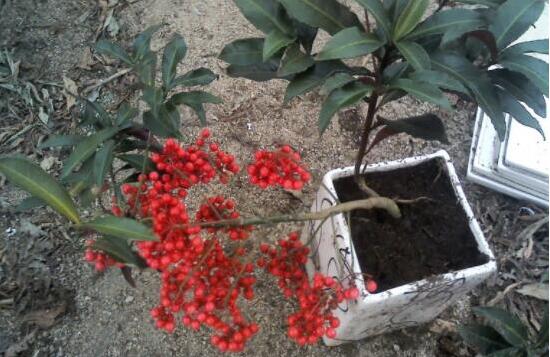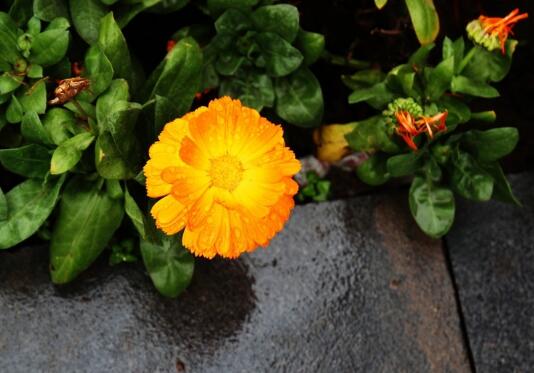How should the insect with waxy shell on cinnabar root leaf be treated?
This is scale insects at risk. The main control measures should be chemical control, can use special pesticides, such as methamidophos, chlorpyrifos, Chinese light scale death, etc., the effect is good, general chemicals difficult to penetrate its wax layer to play the efficacy.
If the number of insects is large, it can be sprayed twice to completely eliminate them. It can also be scraped or brushed, and once it leaves the plant, the insect cannot survive. But cinnabar root is not easy to scrape, and easy to hurt the epidermis of the plant, can be used to brush the old toothbrush, but less than the ideal chemical control.

In the process of conservation, cinnabar root needs to pay attention to pests and diseases to avoid damage to plants. It is understood that cinnabar root diseases and insect pests mainly include: aphids, beet moths/Spodoptera litura, root knot nematode disease, stem rot disease, root rot, their appearance will affect serious consequences. As for what to do with cinnabar root worms, after we determine the specific diseases and insect pests, we can spray drugs against them.
II. Prevention and control of diseases and insect pests of Cinnabar Root
1. Aphids
Aphids are the most common pest in indoor potted plants, and they also endanger the health of cinnabar roots. The insect generally appears in poor ventilation and poor light environment, mainly harming leaves and buds, absorbing a large amount of juice, and making leaves yellow and curled up, or even falling off.
Control methods: when aphids are few, artificial aphid prevention can be adopted, aphids are brushed off with a brush and a brush, and buried in the basin soil; when scale insects are large, 40% omethoate 1000 times solution or 50% dichlorvos 1000 times solution can be sprayed for control, spraying once every 7-10 days, and spraying continuously for 2-3 times can be effective.
2. Spodoptera exigua/Spodoptera litura
In addition to aphids, in the case of high temperature, high humidity and unventilated environment, cinnabar root will also grow moth pests, among which the most common are beet armyworm and litura armyworm. They nibble on the leaves of plants for a living. When the damage is serious, they can eat up the mesophyll, leave only the veins, and even peel off the stem cortex.
Control methods: first, timely removal of eggs and insect leaves, concentrated elimination, to reduce the source of disease; and then spray card death gram, control Taibao, agricultural land music, fast killing spirit 1000 times timely control, because this insect body wall thick, drug resistance strong, control must master early control.
3. Root knot nematode disease
In addition to long worms, cinnabar roots can also get sick when not properly maintained, such as root knot nematode disease, a root disease caused by root knot nematodes. After suffering from this disease, the fibrous root and lateral root of Cinnabar root will produce tuberous root nodes of different sizes. In addition, the disease can cause stunting and stunting.
Control method: The disease is mainly prevented. Before planting, 15 grams of carbofuran granules with a concentration of 3% are evenly applied to the pot soil, then covered with 10 cm thick soil, and then irrigated with water. Generally, various pests can be eliminated.
4. Stem rot
Cinnabar root is not cold-resistant, in winter, to control watering, once too much watering or poor drainage basin soil, coupled with indoor darkness, it is easy to cause stem rot. It is understood that cinnabar root stem rot mostly in the seedling stage, when the disease occurs, the stem of the plant will blacken and rot.
Prevention and control methods: after the above diseases are discovered, the rotten parts of lily bamboo are cut off, sulfur powder is applied, and fresh culture soil is replaced to replant. After that, move the potted plant to a ventilated sunny place, and soon the lily bamboo will return to health.
5. Root rot
If long-term in high temperature and high humidity environment, cinnabar root is also easy to break out root rot. The disease mainly harms the roots of Cinnabar Root, causing root rot, and when it is serious, the whole plant will die. It should be noted that underground pests can cause disease to worsen.
Control methods: prevention of cinnabar root rot, daily maintenance strictly follow the watering method of cinnabar root, do not water more; in the early stage of disease, can spray kasike, Yitaibao, Nongdile and other chemicals for prevention and control.
As for the prevention and control of diseases and insect pests of cinnabar root, Xiaobian introduced this. I believe everyone should know how to do it when they encounter cinnabar root worms or get sick again! In general, the cultivation method of Cinnabar Root was not difficult. As long as everyone was careful, the insects would not come looking for them. Finally, I wish everyone's cinnabar root can grow beautiful ~
Cinnabar root Cinnabar root
Cinnabar root, also known as cinnabar root, big red umbrella, red copper plate, flat wood, octagonal golden dragon, gold ten thousand liang, gold jade full house, rich son.
Growth Habits of Cinnabar Root
Cinnabar root likes warm and humid growing environment, can shade and like good ventilation. The suitable temperature for growth is between 16℃ and-30℃. When the temperature is too high, it will grow stagnant. In winter, the temperature is low, so heat preservation measures should be taken.
Cinnabar root is not tolerant of barren, water and moisture, and does not require high soil requirements. It is best to use loose sandy soil with good drainage.
Distribution of Cinnabar Root
Cinnabar root is distributed in many places in China, including the middle and lower reaches of the Yangtze River, South China and so on. It is also found in Japan, Ryukyu, India and Java.
- Prev

What is the reason for the yellowing of calendula leaves, improper fertilization and watering / diseases and insect pests
Calendula is a kind of flower plant native to western Europe, which is highly ornamental, but the yellowing of flowers will also affect its overall aesthetic feeling. So what is the reason for the yellowing of calendula leaves? What should we do about it? Next, the editor will take you to learn about it.
- Next

What are the common diseases and insect pests of Dashantong?
The disease of pittosporum sinense is mainly caused by withered nematode, which damages tender stem, young plant, stem and petiole base, softens and decays in water, the infected part extends gradually from leaf base to leaf, and the damaged leaf shrinks and browns and dies. Mature plants begin with injured petioles and gradually expand without softening
Related
- Fuxing push coffee new agricultural production and marketing class: lack of small-scale processing plants
- Jujube rice field leisure farm deep ploughing Yilan for five years to create a space for organic food and play
- Nongyu Farm-A trial of organic papaya for brave women with advanced technology
- Four points for attention in the prevention and control of diseases and insect pests of edible fungi
- How to add nutrient solution to Edible Fungi
- Is there any good way to control edible fungus mites?
- Open Inoculation Technology of Edible Fungi
- Is there any clever way to use fertilizer for edible fungus in winter?
- What agents are used to kill the pathogens of edible fungi in the mushroom shed?
- Rapid drying of Edible Fungi

